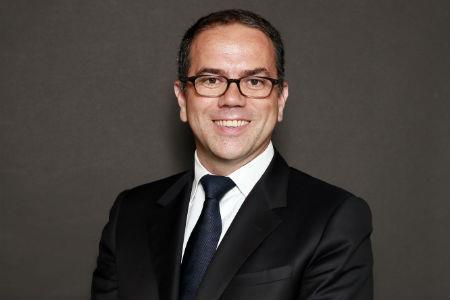As an asset class that depends on the weather rather than the financial markets, ILS could provide an effective shelter from today’s market uncertainties

The slowing of the Chinese economy this summer – which has wiped large sums of money from the country’s stock exchange and dragged down other stock markets around the world – is a timely reminder of just how volatile markets can be. It is also a lesson to investors that no sector or asset class, no matter how successfully it has performed in the past, is immune to crashing. Unfortunately, it is a lesson investors often have to relearn the hard way.
In 2011, just three years after the global crisis of 2008, I spoke to a group of managers from a large pension fund who had managed their portfolios throughout the crisis. When I asked them what the biggest surprise was that they faced during the crisis, they said they had not anticipated how correlated the various asset classes they were invested in really were.
Their own realisation of this came when they saw the commodities market crash alongside most other asset classes, something they had not foreseen. It forced them to acknowledge that they had under-estimated the correlation between the various investment classes in their portfolio.
The growing awareness that no asset class is immune from periodic slumps is one reason why institutional investors such as pension funds and private family funds are increasingly looking to diversify their portfolios – and insurance-linked securities (ILS) are an effective way to achieve this.
ILS are investments in insurance products such as catastrophe bonds and industry loss warranties (ILWs), which behave like insurance contracts, where investors face the risk that the wind blows or the earth shakes.
In times of economic uncertainty, choosing an asset class that is dependent on the weather rather than the financial markets is an attractive proposition for investors. As well as providing diversification, the other big advantage of ILS for institutional investors is that it gives them highquality risk management capabilities when considered as part of their wider portfolio management.
We are seeing pension funds building ILS portfolios that are less liquid
Some of these large investors have been looking at the ILS space since about the 2008 crisis, when they were attracted by its superior risk-adjusted return, the liquidity it offered, as well as the non-correlation to other markets. These funds are typically very cautious in outlook and they have been hesitant to invest in a relatively new asset class that they have not fully understood. Now, however, more institutional investors, having closely studied ILS, are willing to commit some allocation to it.
The cat bond market has not performed well this year: the Aon Cat Bond Index returned only 1% in the first six months of 2015. For an asset class that is uncorrelated to the markets and depends on the weather or seismicity, it is hard to explain to investors how it has delivered such a return when there have been no major natural catastrophes triggering bond payouts. This performance comes from clear adverse mark-to-market movements, but it nevertheless raises the question of what an efficient ILS portfolio should include.
Now, however, is a good opportunity for institutional investors to enter the ILS space because after a soft cycle of two-and-a-half to three years, we are reaching the bottom of the cycle, with pricing starting to rebound in some segments. A report by Willis found that US wind ILW prices hardened in June this year, driven by increased demand by traditional reinsurers as well as from ILS funds.
Depending on timing and capacity, ILW prices rose by between 5% and 15% compared with January this year.
As pension funds gain a more sophisticated understanding of ILS, they are increasingly realising that to generate pure returns in this asset class, they will have to accept less liquidity. So some pension funds that might in 2008 have been attracted by the liquidity of a product that allows them to trade out in one week or a month, now accept longer periods of as much as a year. For this reason, we are seeing pension funds building ILS portfolios that are less liquid with fewer cat bonds in the mix.
Benefits of less liquidity
By accepting less liquidity through a reduced cat bond pocket in the portfolio, these pension funds are insulating themselves more from the mark-to-market movements that have pushed down ILS returns and are stabilising their returns. For funds that may have less liquidity constraints, investing in a portfolio with fewer cat bonds will mean becoming immune to mark-to-market movements and really benefiting from the core of the asset class: the insurance risk.
At SCOR Investment Partners, we constantly monitor all segments of the ILS space, from cat bonds to ILWs, from retrocession to reinsurance contracts on a collateralised basis. We consider ourselves to be at the crossroads between the financial markets and reinsurance sector and we are well positioned to enable institutional investors to get into this space. By partnering with us, these big institutions are co-investing in an ILS programme that we have successfully developed for our parent company, SCOR. Our strategy over the past four years has been effective – we now have $500m of assets under management.
Our first Atropos fund has delivered an annualised average return of 7% over the past four years and we now manage three funds with different liquidity and risk profile.
The current problems in the Chinese economy, which have had a drag on stock markets around the world, are a timely reminder that volatility is a recurring fact in global economies, reinforcing the need for investors to constantly diversify to protect their portfolios.
The ILS sector may have performed poorly in the first half of the year, but we believe that now is a good time for investors seeking diversification to move into this space.
Vincent Prabis is head of ILS at SCOR Investment Partners







No comments yet